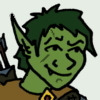HOME | DD
 MatejCadil — Druedain
MatejCadil — Druedain

#fantasyartist #fantasyartwork #fantasydrawing #fantasyillustration #fantasyworld #fineliners #gondor #herrderringe #rohan #thelordoftherings #tolkien #wildman #woses #elseñordelosanillos #traditionalartwork #wildmen #woodwose #inkillustration #druadan #druedain #inktober #tolkienart #czechartist #tolkienfan #ilovefantasyart #matejcadil #ghanburighan
Published: 2022-01-13 18:18:25 +0000 UTC; Views: 3243; Favourites: 32; Downloads: 0
Redirect to original
Description
Drúedain or the Wild Men – for the first prompt of Inktober52 2022 "Wild". I already drew Ghân-buri-Ghân two years ago, so this time I decided to draw a more general picture of them, illustrating their introduction by Elfhelm:
You hear the Woses, the Wild Men of the Woods: thus they talk together from afar. They still haunt Drúadan Forest, it is said. Remnants of an older time they be, living few and secretly, wild and wary as the beasts. They go not to war with Gondor or the Mark; but now they are troubled by the darkness and the coming of the orcs: they fear lest the Dark Years be returning, as seems likely enough. Let us be thankful that they are not hunting us: for they use poisoned arrows, it is said, and they are woodcrafty beyond compare.
The Lord of the Rings. Book V, Chapter 5: The Ride of the Rohirrim
As I was pondering their description and more details given in the Unfinished Tales (there is a whole section dedicated to them), I realized one thing that has never occured to me, even when I was working on the first picture: How much the Drúedain resemble the 𝗡𝗲𝗮𝗻𝗱𝗲𝗿𝘁𝗵𝗮𝗹𝘀.
The Drúedain are explicitly said to be unlike any other Men. "people of a wholly different kind, the like of which neither the Eldar in Beleriand nor the other Atani had ever seen before". This is how Tolkien describes their appearance:
To the eyes of Elves and other Men they were unlovely in looks: they were stumpy (some four foot high) but very broad, with heavy buttocks and short thick legs; their wide faces had deep-set eyes with heavy brows, and flat noses, and grew no hair below their eyebrows, except in a few men (who were proud of the distinction) a small tail of black hair in the midst of the chin. Their features were usually impassive, the most mobile being their wide mouths; and the movement of their wary eyes could not be observed save from close at hand for they were so black that the pupils could not be distinguished, but in anger they glowed red.
The Unfinished Tales. Part IV, Chapter 1 – The Drúedain
Most of the physical features described here fit remarkably well with the Neanderthals (short and broad figure, short thick legs and arms, wide faces with deep-set eyes and wide noses and most notably the prominent heavy brows and wide mouths). The Drûgs are said to have a shorter lifespan than other humans, they were low in numbers, having been hunted almost into extinction by more "civilized" men. They lived in small groups a relatively primitive life of hunter-gatherers, were content to live in tents and caves and used only stone-age tools before some of them came to Beleriand. There is even a note in the UT about the historians in Gondor believing the Drúedain were the first Men to ever cross the Anduin and thus the earliest human inhabitants of north-western Middle-earth, before it was occupied by later-arrived groups of Men, which also fits with the Neanderthals (we know that they coexisted with modern humans in Europe for a few thousand years). Interestingly, relatively recent research showed that the Neanderthals were quite intelligent and had a fairly rich cultural life, so they were not those brutish, grunting cavemen of popular imagination.
I find this really fascinating. I never had a really clear mental picture of the Drúedain. I always felt they were different from some stock "noble savage" indigenous tribe based on natives from Africa or the New World (which is also shown by their residence almost in the heart of Gondor), they reminded me of something else but I couldn't quite put my finger on it. Now I view them in a wholly different light.
Now, do I think the Drúedain are supposed to really be an accurate literary portrayal of the Neanderthals?
No, not quite. There are some notable differences, especially their relative hairlessnes, their great artistic skills and the friendship with the Folk of Haleth. But I see there a tantalizing "what if".
It is also remarkable how Tolkien (as he is wont to do) uses the established trope of the "wild man of the woods" from medieval literature and art and provides the "actual" origin of it.
Read my post on Patreon where I explain all that in more detail: www.patreon.com/posts/61031090
What do you think about the Drúedain–Neanderthals connection? Do you agree with it or not? I would love to hear your opinion!
Related content
Comments: 3

👍: 1 ⏩: 0

👍: 1 ⏩: 0

👍: 1 ⏩: 0

















